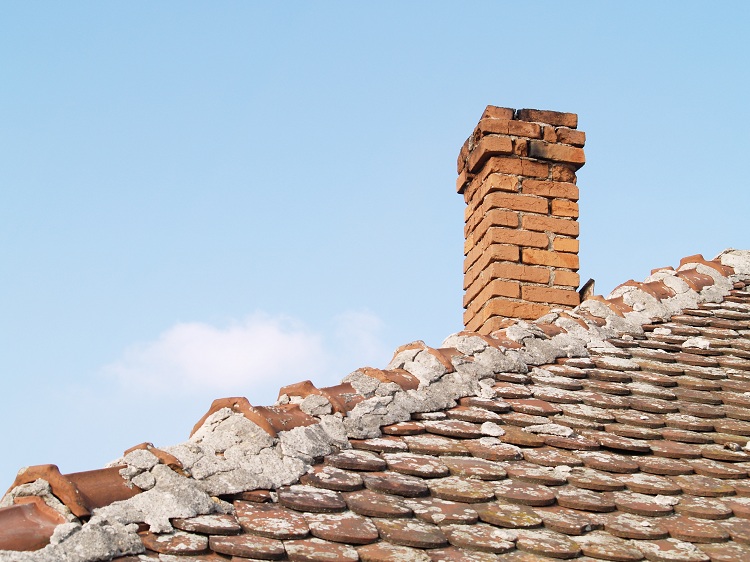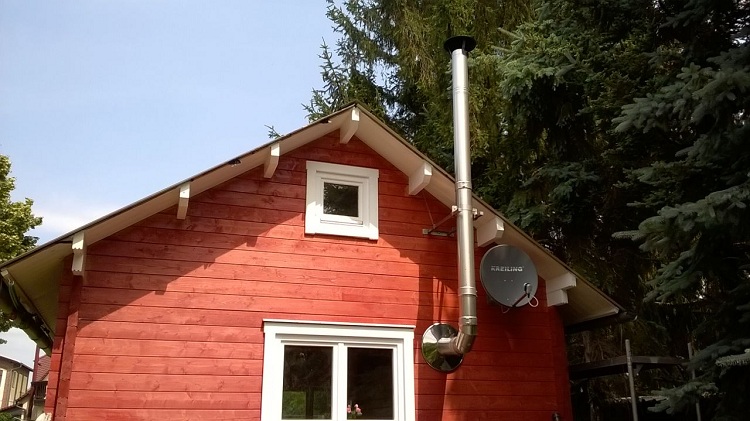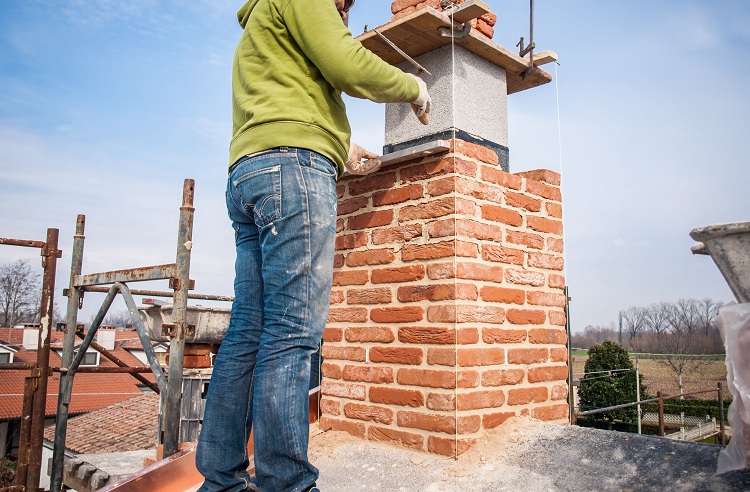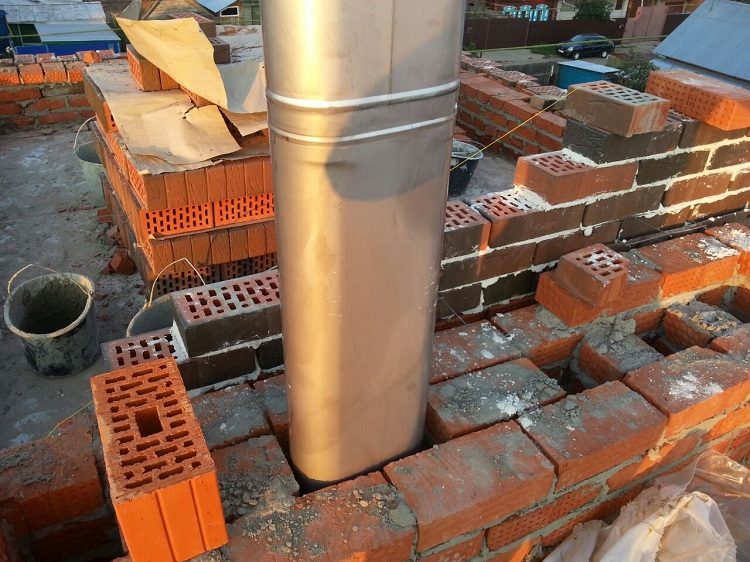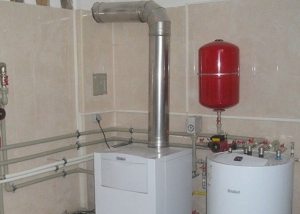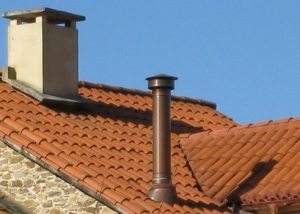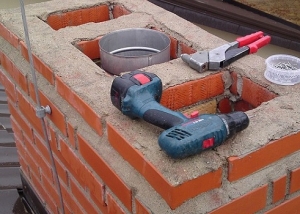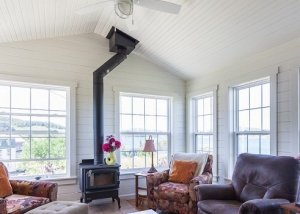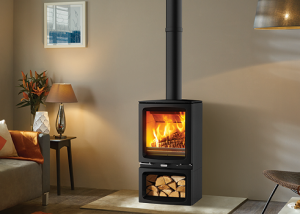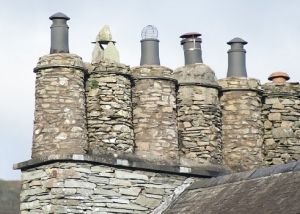A chimney is a channel that is made of different materials and carries out the removal of combustion products outside a residential building. The quality of heating, and sometimes the life of residents, depends on the integrity and purity of this channel. In the event of various defects in the chimney structure, the only correct solution is to eliminate them immediately.
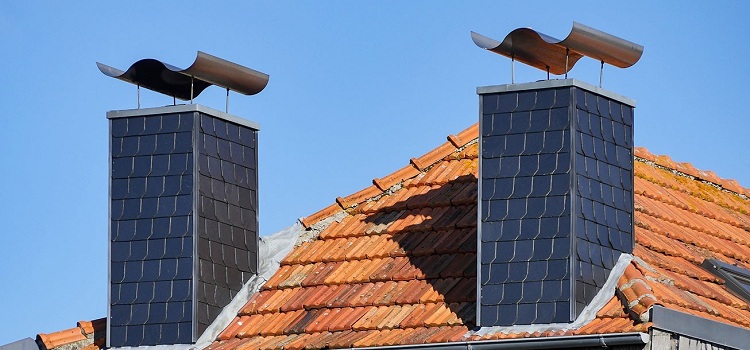
The operation of the heating system depends on the condition of the chimney, therefore, the repair of the chimney must be carried out in a timely manner
Content
What functions does the chimney channel perform?
The chimney is located in a vertical plane and is a channel, the shape of which can be different. Consider two main options for the cross-sectional shape of these structures:
- rectangular;
- round.
The most common materials for chimneys, as a rule, are:
- brick;
- steel (stainless or galvanized).
Each design of this type must comply with certain building and fire standards, which are described in detail in the relevant documentation. Consider the main functions that these channels perform:
- elimination of the combustion products of raw materials that are processed in heating devices outside the residential building;
- providing the necessary traction indicators. Chimney draft is a very important indicator on which the efficiency of the heating system as a whole depends.;
- Some chimneys are considered to be an indispensable element of the building decor.
Important! Any malfunctions that occur during the operation of this heating communication can lead to disastrous consequences. In a faulty design, traction is disrupted, which leads to a decrease in the quality of heating. A phenomenon such as reverse draft can occur and combustion products can enter residential premises, which undoubtedly poses a danger to the life of residents.
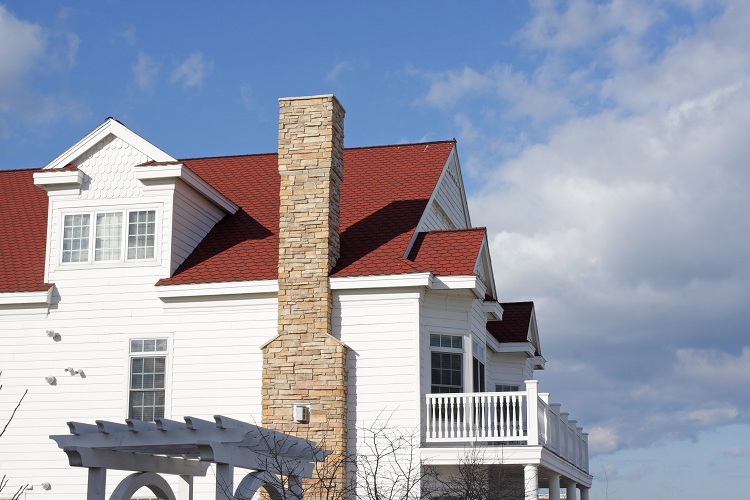
In addition to the main function, the chimney can play the role of a decorative element in the exterior of the building
There are many factors that affect the chimney and contribute to its destruction. In particular, these factors pose a danger to brick structures, as they are less resistant to them.
The reasons for the destruction of brick chimneys
There are natural and artificial factors that contribute to the destruction of chimney ducts. Natural factors include:
- temperature differences;
- aggressive chemicals that make up smoke;
- condensate due to temperature differences inside and outside the channel.
Natural factors have a detrimental effect on brick structures, since the brick does not have an anti-corrosion effect and quickly wears out when temperature fluctuates. Metal pipes deal with these factors much better, however, they also have their own vulnerabilities.
In turn, artificial factors are no less and sometimes more destructive for brick channels. Consider them:
- improper brickwork technology, which refers to installation errors, can cause poor traction in the chimney design;
- low quality of materials from which the channel for smoke exhaust is collected;
- operational errors;
- other errors when installing the system.
Errors in the installation of this communication, perhaps, are one of the most common problems. During operation, the incorrect design of the system affects its operation, the amount of condensate in the channel increases, which in the cold season leads to icing of the inner walls. Freezing of condensate destroys the solution and, thus, spoils the masonry. In addition, improper design affects traction in the system.
The use of base brick during the installation of the chimney, which did not pass the hardening procedure properly, leads to its rapid wear. Using poor quality materials may cause a fire in the future. Destruction of the chimney structure can also occur due to mechanical stress. In any case (regardless of the cause of the destruction), experts recommend immediately responding and performing the necessary repair work.
In what cases repair is indispensable?
Chimney repair is a serious procedure, which often takes a lot of time and effort. Many owners of private homes that are equipped with an autonomous heating system, including a chimney, ask themselves: how to determine the need for repair of the chimney? Consider the signs indicating that it is time to repair the chimney:
- repair is necessary if the chimney on the roof begins to collapse;
- cracks visible on the brickwork area, which is located inside a residential building, also indicate that it is necessary to reconstruct the chimney;
- traction reduction. This may indicate a number of reasons, among which are: clogging of the chimney duct with soot, broken-off fragments of mortar and bricks, as well as installation errors;
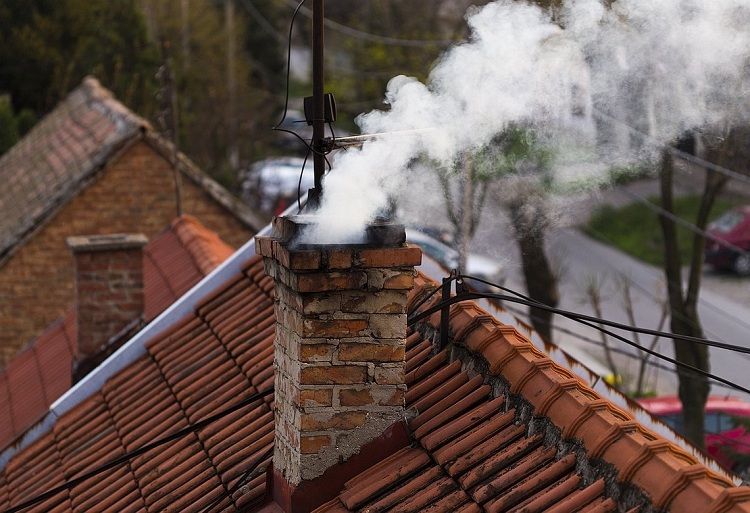
A decrease in draft in the chimney may indicate that cracks have appeared in the pipe or that it is clogged
- slotted holes in the foundation of the furnace that arose as a result of the operation of the system. Such slots indicate that the fireplace or stove does not warm up enough during the operation of the system;
- problems with seams of the chimney structure arising as a result of poor-quality sealing.
Note! As a rule, the cause of the destruction of the chimney is the environmental impact, namely rain, snow, wind and temperature changes. However, other options are possible (for example, a pipe on the roof may deteriorate as a result of mechanical stress).
Once and for all, it is worth remembering that repair of the deformation manifestations of the chimney must be performed immediately after their detection. There are several ways to repair chimney structures. The selection of the repair method depends on what material was used in the construction of the chimney structure.
Features of repair of steel chimneys
Steel chimneys are a more modern solution and differ in some advantages over brickwork. Consider the main advantages of using steel pipes for the installation of chimney communication:
- availability;
- resistance to corrosion;
- resistance to aggressive chemicals;
- resistance to temperature changes;
- ease of installation.
From a structural point of view, such channels are modular and consist of pipes that are interconnected. Docking of pipes in such structures is carried out by means of special connecting clamps.
Consider the phased repair of steel structures:
- First, clean the chimney.
- After cleaning, you need to conduct a preliminary inspection of the chimney. This event will identify the reason that prevents the chimney from performing its functions properly. As a rule, the main reason for reducing draft in a steel chimney is the occurrence of cracks.
- In the case of a crack, repair is quite simple: the damaged segment is replaced with another.
Repairing a steel chimney is considered very simple, since it does not require complete dismantling of the structure (damaged modules can easily be replaced with new ones).
How to repair a brick chimney?
To date, several methods of repairing brick chimney structures are used. In most cases, brick chimneys are constructed to divert the combustion products of solid fuels (coal, firewood). Old brick structures are not only covered with cracks, but also showered. In especially neglected cases, the old smoke exhaust system can completely collapse.
In most cases, repair of the chimney requires disassembly of the structure. Moreover, dismantling is carried out from the upper point of the pipe located on the roof to the damaged area. This is a rather difficult job, which takes a lot of time and effort. In some cases, it is easier to make a new chimney than to dismantle and reassemble the old structure.
Note! In order to repair a chimney made of brick, it is recommended to use only high-quality materials. Such materials must withstand the intense heat generated by the processing of solid fuels.
In addition to the main method described above, there are other options for restoring a brick chimney. Consider them:
- sleeve;
- lining or lining;
- pipe reconstruction with polymer liners.
Chimney sleeve
Chimney casing is the introduction of a steel or ceramic pipe assembled from individual segments into an old brick channel. Consider the main advantages of such a reconstruction:
- increase in traction due to the fact that the sleeve, as a rule, has a round shape. This form is most suitable for high-quality removal of combustion products;
- smooth inner walls of pipes installed as a sleeve exclude the possibility of fast clogging of the channel with soot;
- heat losses in this design are minimized.
Before the reconstruction of the chimney channel through the sleeve, it is recommended to carry out preparatory work. Preparation for the reconstruction of the brick chimney is carried out in the following order: first, the reliability of the brickwork and the patency of the internal channel are checked. Further, in accordance with the size of the internal channel, a section of pipes is selected that will serve as a sleeve.
After completion of the preparatory work, the chimney is directly sleeved. Consider this process in stages:
- First of all, you need to climb the roof and dismantle the brickwork. This is a necessary event, which allows you to free the channel for mounting the sleeve.
- At the second stage, the sleeve is installed. In most cases, this process is performed from the top of the old chimney to the bottom. Initially, the lower part of the sleeve is fixed to the ropes and immersed to the required level in the brick channel. Then the next module is inserted in the first segment, etc. At the joining points of individual segments of the sleeve, it is necessary to disassemble the brickwork in order to make a reliable connection of the pipes.
- Further, the free space between the inner wall of the brick channel and the outer wall of the sleeve is filled with a suitable heat-insulating material.
- After the insulation is placed, a protective cap is put on the end of the sleeve. It is necessary in order to protect the new chimney duct from precipitation and debris.
Advice! During the installation of the sleeve, experts recommend taking care of the organization of a special inspection door. Such a door is necessary for cleaning a section of the chimney duct.
- At the end, the masonry is sealed, which was disassembled for joining the structural elements of the sleeve.
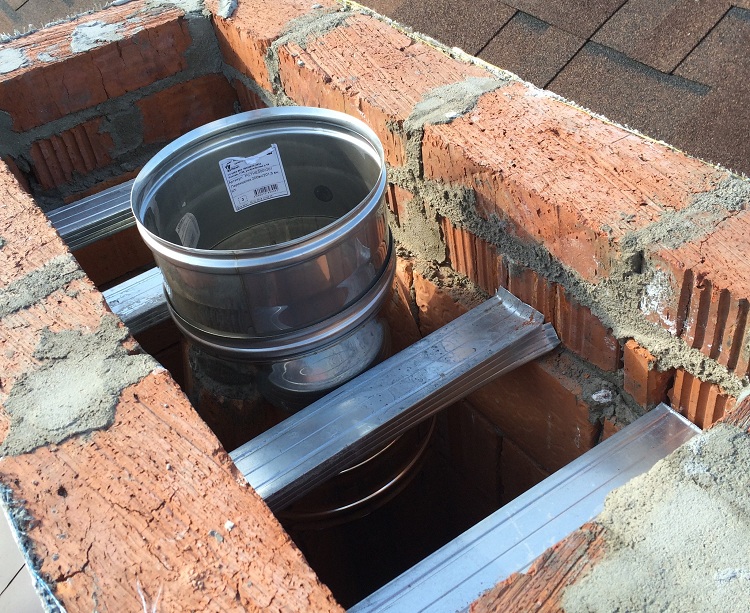
There must be free space between the sleeve and the brick walls, which is filled with insulating material.
Flue duct lining
The lining or lining of the chimney is a universal way to reconstruct chimney and ventilation ducts, which involves the use of special refractory compounds. The most popular tools used for the reconstruction of chimney channels are:
- Mordax;
- Mosan.
The main element that is part of the first remedy is granite chips. Such a product is produced in Finland, therefore, it has good quality characteristics. To obtain the necessary mortar, which will allow repair of a chimney made of brick, this product is kneaded with lime, as well as cement mortar and water. Mosan is a domestic analogue of Mordax, which is made on the basis of perlite.
Both of the above tools are distinguished by the fact that they are easily seized with brick and concrete material. The main advantage of this reconstruction method is that it is produced without dismantling the brickwork. After reconstruction, the walls of the internal channel of the chimney become smooth. Thus, the traction in the system increases and its cleaning is simplified.
As a rule, lining is very fast. The entire reconstruction process takes no more than 3-4 hours. Consider the order of work during the lining:
- First of all, it is necessary to clean the inner channel of the old brick chimney, removing all soot and other foreign elements from it.
- Next, the channel is moistened.
- At the third stage, a blowing tool (brush) is immersed in the channel, which sprays the composition onto the inner walls of the channel.
- Spraying the mixture is repeated 3 times. Each of the previous layers must dry before applying the next.
Reconstruction with polymer liners
This method of chimney reconstruction is the most modern today. Unlike previous methods of repairing the chimney, the use of polymer liners is not so common, however, you should pay attention to this method.
Reconstruction with polymer liners is suitable in cases when gas-fired boilers act as a heating device. This is due to the low temperature that occurs during gas processing. Accordingly, this method of repairing the chimney is not suitable if the heating device operates on solid fuel.
Consider the phased repair of the chimney using the following inserts:
- First you need to immerse the liner of the polymer material inside the chimney.
- Next, you need to pump the liner with air, which is under pressure, and then steam.
- As a result, the liner, which is affected by compressed air and steam, adjusts to the shape of the internal channel of the flue gas duct and freezes.
Thus, the surface of the channel is covered by a polymer layer, which is characterized by high strength characteristics, heat resistance and smoothness.Smooth internal walls will not allow soot deposits to accumulate, and will also contribute to more efficient removal of combustion products outside the residential building.
